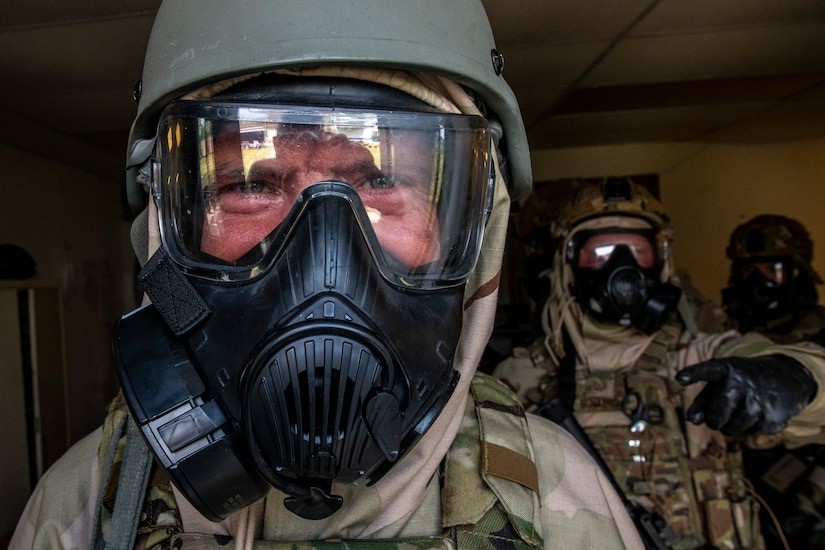“The U.S. faces an unprecedented number of complex biological threats posed by near-peer competitors, non-state actors and naturally occurring pandemics,” warns Deborah G. Rosenblum, assistant secretary of defense for nuclear, chemical and biological defense programs She stated that this requirs a significant response by the Defense Department.
The Department of Homeland Security defines the threat as the intentional release of a pathogen (disease causing agent) or biotoxin (poisonous substance produced by a living organism) against humans, plants, or animals. An attack against people could be used to cause illness, death, fear, societal disruption, and economic damage. An attack on agricultural plants and animals would primarily cause economic damage, loss of confidence in the food supply, and possible loss of life. Aerosols, infected humans, animals, insects, and the contamination of crops.
Among the most serious of these threats are Anthrax, Plague, Tularemia, Marburg disease, Ebola, smallpox, and Botulism, followed by Cholera, Glanders, Q fever Encephalitis and Ricin.
“These threats certainly impact the readiness and resilience of our military forces,” Rosenblum said. “Biodefense is no longer something that’s the purview of just specialized units who have traditionally been worried about these threats…deterrence requires a combat credible force… be combat credible, the whole joint force must be capable of fighting through biothreats and being resilient.”
In August, the Pentagon released its first Biodefense Posture Review which lays out key reforms aimed at positioning the U.S. to counter biothreats through 2035. The reforms outlined in the review call for enhanced early warning and understanding of emerging biothreats, improving preparedness of the total force, speeding response to biothreats to mitigate their impact on DOD missions and improving strategic coordination and collaboration to enhance biodefense. The reforms will be initiated by the newly created biodefense council, chaired by William A. LaPlante, undersecretary of defense for acquisition and sustainment.
The reforms also align with key National Defense Strategy priorities to defend the homeland against the multidomain pacing threat posed by the People’s Republic of China, deter strategic attacks against the U.S. and its allies and build a resilient joint force.
“The [Biodefense Posture Review] was built on the foundation laid out in the National Defense Strategy along with the National Biodefense Strategy, but it was also greatly informed by a number of lessons learned from the COVID-19 response,” Rosenblum said. She noted that in addition to remaining focused on biological threats posed by near-peer competitors and nonstate actors, the U.S. must remain focused on emerging biotechnologies that could be incorporated into adversaries’ future biological warfare programs.
“We are at a pivotal point in biodefense,” Rosenblum said. “We must maintain our momentum to prepare for any number of complex potential biological threats.”
A Defense Department analysis notes that the threat and risk from bioincidents must be taken seriously, and implement the significant reforms to lay the foundation for a resilient Total Force that deters the use of bioweapons, rapidly responds to natural outbreaks, and minimizes the global risk of laboratory accidents. The study emphasizes that “This must be done with stronger collaboration with U.S. interagency partners and abroad with allies and partners working collectively to understand the threat, prepare and protect the force, and quickly respond to and mitigate the effects of bioincidents.”
According to the Pentagon, China, Russia, North Korea, and Iran, probably maintain the knowledge and capability to produce and employ traditional pathogens and toxins. These countries historically pursued, and at least one country (North Korea) continues to pursue, pathogens that cause highly infectious or contagious diseases, such as anthrax, plague, and toxins, including botulinum toxin. These nations probably also retain the knowledge and ability to employ these agents if necessary.
Photo: Department of Defense
